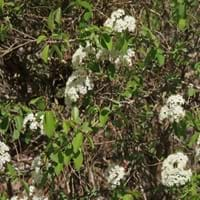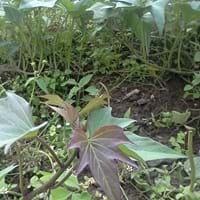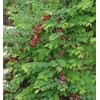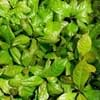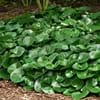Life Span
Perennial
Annual and Perennial
Type
Broadleaf Evergreen
Bulb or Corm or Tuber
Origin
Hybrid origin
Latin America and the Caribbean, Central America, Micronesia
Types
Viburnum betulifolium
Viburnum dentatum
Viburnum edule
Viburnum farreri
Viburnum dilatatum
Hannah Yams, Japanese Sweet Potatoes
Habitat
Swamps
Cold Regions, Tropical regions
USDA Hardiness Zone
5-8
11-12
AHS Heat Zone
Not Available
12-1
Habit
Oval or Rounded
Vining/Climbing
Minimum Width
Not Available
Flower Color
White, Pink, Light Pink
Not Available
Flower Color Modifier
Bicolor
Bicolor
Fruit Color
Not Available
Not Available
Leaf Color in Spring
Dark Green
Green, Purple, Light Green, Chartreuse, Bronze
Leaf Color in Summer
Dark Green
Light Green
Leaf Color in Fall
Dark Green
Several shades of Green
Leaf Color in Winter
Gray Green, Dark Green
Light Green
Leaf Shape
Lanceolate
Heart-shaped
Plant Season
Spring, Summer, Fall, Winter
Spring, Summer, Fall, Winter
Sunlight
Full Sun, Partial Sun
Full Sun, Partial Sun
Growth Rate
Fast
Very Fast
Type of Soil
Clay, Loam, Sand
Clay, Loam, Sand
The pH of Soil
Acidic, Neutral
Acidic, Neutral, Alkaline
Soil Drainage
Average
Well drained
Bloom Time
Spring, Late Spring
Late Fall, Early Winter, Winter
Tolerances
Drought, Soil Compaction
Drought
Where to Plant?
Ground
Ground, Pot
How to Plant?
Rooted stem cutting, Stem Cutting
Stem Cutting, Tuber propagation
Plant Maintenance
Medium
Medium
Watering Requirements
Do not water frequently, Needs very little water
Average Water Needs, Needs a lot of water initially
In Summer
Lots of watering
Lots of watering
In Spring
Moderate
Moderate
In Winter
Average Water
Average Water
Soil pH
Acidic, Neutral
Acidic, Neutral, Alkaline
Soil Type
Clay, Loam, Sand
Clay, Loam, Sand
Soil Drainage Capacity
Average
Well drained
Sun Exposure
Full Sun, Partial Sun
Full Sun, Partial Sun
Pruning
Remove damaged leaves, Remove dead branches, Remove dead leaves
Remove damaged leaves, Remove dead branches, Remove dead leaves
Fertilizers
All-Purpose Liquid Fertilizer
All-Purpose Liquid Fertilizer
Pests and Diseases
Red blotch
Aphids, Beetles, Leafminers, Red blotch
Plant Tolerance
Drought
Drought
Flower Petal Number
Single
Single
Foliage Texture
Medium
Coarse
Foliage Sheen
Glossy
Matte
Attracts
Aphids, Mites
Aphids, Beetles, Mites, white worms
Allergy
Not Available
Abdominal pain, Skin rash, Swelling, Vomiting
Aesthetic Uses
Not Available
Not Used For Aesthetic Purpose
Beauty Benefits
Not Available
Not Available
Environmental Uses
Air purification
Air purification
Medicinal Uses
Diaphoretic, Febrifuge
Potassium, ß-carotene, Vitamin C
Part of Plant Used
Fruits
Leaves, Root, Shoots
Other Uses
Not Available
Used As Food, Used for its medicinal properties
Used As Indoor Plant
No
Yes
Used As Outdoor Plant
Yes
Yes
Garden Design
Feature Plant, Foundation, Mixed Border, Screening, Wind Break
Container, Edible, Groundcover, Hanging Basket, Herb / Vegetable, Mixed Border, Vine
Botanical Name
VIBURNUM 'Pragense'
IPOMOEA batatas
Common Name
Withe Rod
Appalachian Tea
Witherod Viburnum
Witherod
Sweet Potato, Sweet Potato Vine
In German
Viburnum
Süßkartoffel
In French
Viorne
Patate douce
In Spanish
Viburnum
Batata
In Greek
Είδος αιγοκλήματος
Γλυκοπατάτα
In Portuguese
viburno
Batata doce
In Polish
Kalina
Słodki ziemniak
In Latin
Viburnum
Dulcis SOLANUM TUBEROSUM
Phylum
Tracheophyta
Magnoliophyta
Class
Magnoliopsida
Magnoliopsida
Order
Dipsacales
Solanales
Family
Caprifoliaceae
Convolvulaceae
Clade
Angiosperms, Asterids, Eudicots
Angiosperms, Asterids, Eudicots
Tribe
Not Available
Not Available
Subfamily
Not Available
Not Available
Season and Care of Viburnum and Sweet Potato
Season and care of Viburnum and Sweet Potato is important to know. While considering everything about Viburnum and Sweet Potato Care, growing season is an essential factor. Viburnum season is Spring, Summer, Fall and Winter and Sweet Potato season is Spring, Summer, Fall and Winter. The type of soil for Viburnum is Clay, Loam, Sand and for Sweet Potato is Clay, Loam, Sand while the PH of soil for Viburnum is Acidic, Neutral and for Sweet Potato is Acidic, Neutral, Alkaline.
Viburnum and Sweet Potato Physical Information
Viburnum and Sweet Potato physical information is very important for comparison. Viburnum height is 240.00 cm and width 180.00 cm whereas Sweet Potato height is 60.00 cm and width Not Available. The color specification of Viburnum and Sweet Potato are as follows:
Viburnum flower color: White, Pink and Light Pink
Viburnum leaf color: Dark Green
Sweet Potato flower color: Not Available
- Sweet Potato leaf color: Green, Purple, Light Green, Chartreuse and Bronze
Care of Viburnum and Sweet Potato
Care of Viburnum and Sweet Potato include pruning, fertilizers, watering etc. Viburnum pruning is done Remove damaged leaves, Remove dead branches and Remove dead leaves and Sweet Potato pruning is done Remove damaged leaves, Remove dead branches and Remove dead leaves. In summer Viburnum needs Lots of watering and in winter, it needs Average Water. Whereas, in summer Sweet Potato needs Lots of watering and in winter, it needs Average Water.
